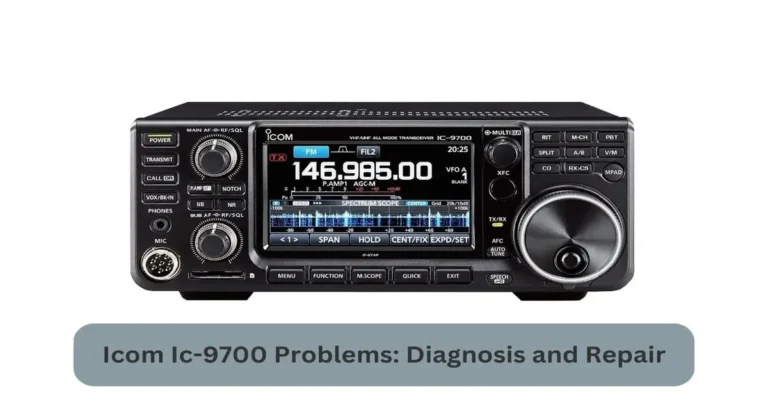How Far Can You Communicate with a Ham Radio?
Ham radios, also known as amateur radios, are popular among hobbyists and emergency communication enthusiasts. They operate on specific frequencies allocated by the Federal Communications Commission (FCC) and can transmit and receive signals over long distances.
But how far can you communicate with a ham radio? In this article, we will explore the factors that affect the range of ham radios and how to maximize their communication capabilities.
Understanding Radio Frequencies
Ham radios operate on a range of frequencies, including very high frequency (VHF), ultra-high frequency (UHF), and high frequency (HF). The frequency used can affect the distance that can be covered by the radio signal. VHF and UHF frequencies are typically used for local communication, while HF frequencies can reach much greater distances.
VHF and UHF Frequencies
VHF and UHF frequencies are commonly used for short-range communication, usually within a few miles or up to 25 miles with a clear line of sight. These frequencies are commonly used for handheld radios and are popular among hikers, campers, and boaters who need to communicate in remote areas.
HF Frequencies
HF frequencies, on the other hand, can reach much greater distances, sometimes across continents or even around the world. This is because they can reflect off the ionosphere, a layer of the Earth’s atmosphere that contains charged particles. However, HF frequencies require more power and longer antennas than VHF and UHF frequencies to achieve long-range communication.
Factors That Affect Radio Range
The range of a ham radio signal depends on various factors, including:
Power Output
The power output of the radio transmitter can affect the distance the signal can reach. Higher power outputs can transmit signals over longer distances, but they also consume more battery power.
Antenna Height and Placement
The height and placement of the antenna can also affect the range of the radio signal. Antennas placed higher up, such as on a hilltop or on a tall mast, can transmit signals over greater distances. The type of antenna used also affects the range, with directional antennas being able to focus the signal in a specific direction.
Weather Conditions
Weather conditions such as rain, snow, and thunderstorms can affect the range of a radio signal, as they can absorb or scatter the signal. Atmospheric conditions can also affect the range, with certain frequencies being more effective at certain times of the day.
Radio Interference
Radio interference from other devices or sources can affect the range of a radio signal. Interference can be caused by nearby power lines, electronic devices, or even natural phenomena such as lightning.
How to Maximize Your Radio Range
To maximize the range of your ham radio, you can take several steps:
Use High-Frequency Bands
Using high-frequency bands such as HF can increase the range of your radio signal. However, this requires a larger antenna and more power output than VHF and UHF frequencies.
Increase Power Output
Increasing the power output of your radio transmitter can also increase the range of your signal. However, this can drain your battery more quickly and may require a larger antenna.
Use a Directional Antenna
Using a directional antenna can focus your radio signal in a specific direction, increasing the range in that direction.
Choose a Clear Line of Sight
Choosing a clear line of sight between your transmitter and receiver can also increase the range of your signal. Avoid obstructions such as buildings or trees, which can absorb or scatter the signal.
Some Common Questions: FAQs
Can ham radios be used for emergency communication?
Yes, ham radios can be used for emergency communication. They are often used during natural disasters or other emergencies when other forms of communication may be unavailable.
Do I need a license to operate a ham radio?
Yes, you need a license to operate a ham radio. The FCC issues licenses for amateur radio operators.
Can I use my ham radio to listen to broadcasts?
Yes, you can use your ham radio to listen to broadcasts. However, you need a license to transmit signals.
How much does a ham radio cost?
The cost of a ham radio can vary depending on the features and capabilities of the radio. They can range from a few hundred dollars to several thousand dollars.
Can ham radios communicate with other types of radios?
Yes, ham radios can communicate with other types of radios, as long as they are operating on the same frequency and using the same mode of communication.
Conclusion
In conclusion, the range of a ham radio signal depends on various factors, including frequency, power output, antenna height and placement, weather conditions, and radio interference. To maximize the range of your radio signal, you can use high-frequency.
To maximize the range of your radio signal, you can use high-frequency bands, increase your power output, use a directional antenna, and choose a clear line of sight. By doing so, you can communicate over long distances with your ham radio.
However, it’s important to note that ham radios are not a substitute for emergency communication devices such as cell phones or satellite phones. They should be used as a supplement to these devices, especially in areas where there is no cell phone coverage or during emergencies.
